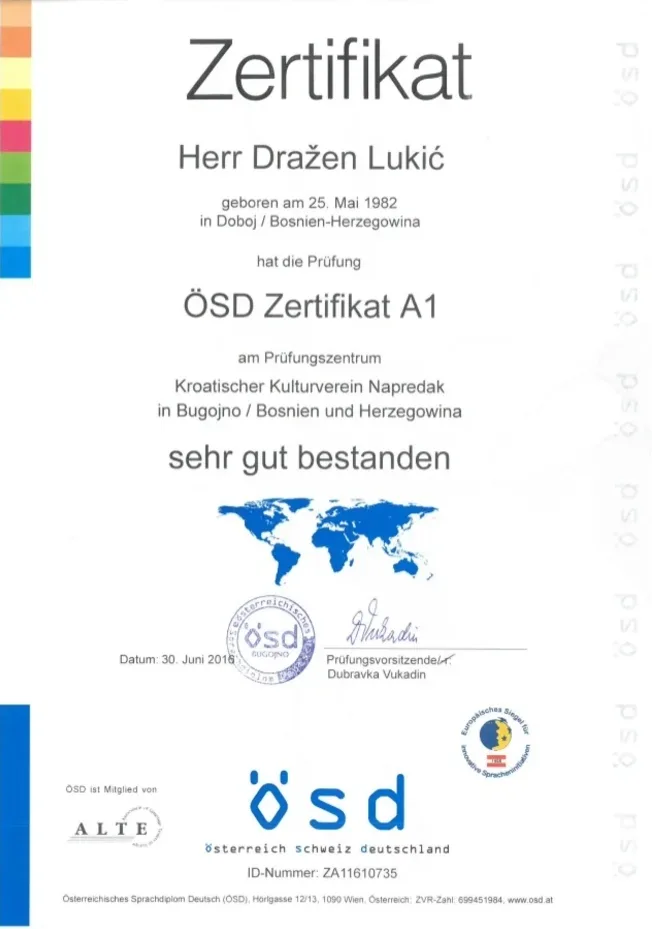30 Inspirational Quotes On Austrian Language Test

Understanding the Austrian Language Test: Importance, Structure, and Preparation
Austria, an attractive country understood for its sensational landscapes, abundant history, and vibrant culture, is likewise home to a distinct linguistic identity. While German is the main language of Austria, the variations in dialects and nuances can be quite different from basic German, making language efficiency an essential aspect for immigrants who wish to live, work, or study in the nation. One significant step in attaining efficiency in German as spoken in Austria is the Austrian Language Test (ÖSD - Österreichisches Sprachdiplom Deutsch). This short article explores the value, structure, and preparation approaches for the Austrian Language Test, in addition to regularly asked concerns, to help people navigate this important process.
Significance of the Austrian Language Test
The Austrian Language Test serves numerous functions, each highlighting the significance of language proficiency in interaction and integration:

Social Integration: Proficiency in the local language promotes better communication and relationship-building, vital for personal and professional interactions in Austria.
Academic Opportunities: Non-native German speakers wanting to register in Austrian universities must show their language efficiency through the ÖSD, guaranteeing they can follow coursework efficiently.
Work Eligibility: Many companies in Austria require evidence of language skills, making the ÖSD a crucial certification for task seekers.
Residency and Citizenship: For foreigners making an application for residency or citizenship, evidence of language proficiency is often a requirement, highlighting the importance of understanding the local language and culture.
Cultural Appreciation: Learning the language enhances the understanding of Austrian customs, customs, and literature, resulting in a much deeper gratitude of the country's cultural landscape.
Structure of the Austrian Language Test
The Austrian Language Test is divided into several levels to evaluate a person's command of the German language, lined up with the Common European Framework of Reference for Languages (CEFR). The test consists of the following crucial components:
Levels of the Test
A1: Beginner level-- Basic understanding of daily expressions and familiar expressions.
A2: Elementary level-- Ability to communicate in simple tasks requiring a direct exchange of info on familiar subjects.
B1: Intermediate level-- Understanding of the bottom lines in clear basic input, consisting of conversations on work, school, and leisure.
B2: Upper-intermediate level-- Ability to interact with fluency and spontaneity while discussing a variety of complicated topics.
C1: Advanced level-- Proficiency in understanding a vast array of demanding, longer texts, and expressing ideas with complete confidence.
C2: Mastery level-- Near-native efficiency, comprehending essentially whatever heard or check out and expressing oneself spontaneously.
Exam Structure
The ÖSD generally consists of 4 main parts:
Checking Out Comprehension: Participants read different texts and respond to concerns to examine their understanding and interpretation abilities.
Composing: Candidates write essays, letters, or reports based upon triggers to evaluate their ability to communicate ideas clearly and effectively.
Listening Comprehension: This area consists of listening to audio recordings, followed by questions developed to examine listening abilities and comprehension.
Speaking: This part involves oral interviews or presentations, where candidates must show their speaking abilities in real-life circumstances.
The tests are developed to be appealing yet tough, guaranteeing that prospects can showcase their language capabilities properly.
Preparation for the Austrian Language Test
Getting ready for the Austrian Language Test requires a structured technique to ensure proficiency throughout all 4 skills: reading, writing, listening, and speaking. Here are numerous preparation approaches to consider:
1. Enlist in Language Courses
Language Schools: Many language schools in Austria offer courses particularly designed to prepare students for the ÖSD. These courses typically focus on the types of materials covered in the test.
Online Classes: Various online platforms offer interactive language lessons, enabling learners to study at their own rate.
2. Experiment Past Tests
Prospects can access previous ÖSD evaluation documents or sample tests to acquaint themselves with the concern formats and exam structure.
3. Participate In Language Exchanges
Signing up with language exchange programs or conversation clubs allows candidates to practice talking to native German speakers and other learners, enhancing their self-confidence and fluency.
4. Use Language Learning Apps
Duolingo: Provides interactive language video games and workouts customized to various efficiency levels.
Babbel: Focuses on conversation abilities, supplying real-life discussions vital for verbal interaction.
5. Immerse in the Language
Listen to German Media: Consuming German music, podcasts, and audiobooks helps enhance listening comprehension.
Read Literature: Reading German books, papers, and publications exposes learners to various composing designs and vocabulary.
6. Hire a Language Tutor
Working individually with a competent language tutor can help customize discovering experiences to focus on individual weaknesses and reinforce specific abilities.
Often Asked Questions (FAQs).
Q1: How long does it require to get ready for the Austrian Language Test?
A1: Preparation time varies based on the individual's beginning proficiency level. On average, it may take a couple of months of constant study to get ready for a specific level.
Q2: Is the ÖSD test acknowledged worldwide?
A2: Yes, the ÖSD test is extensively acknowledged as proof of German language efficiency and is often needed by universities and companies in German-speaking nations worldwide.
Q3: How much does the Austrian Language Test expense?
A3: The expense of the ÖSD varies depending upon the testing center and place. Typically, rates vary from EUR150 to EUR300.
Q4: Can I retake the test if I do not pass?
A4: Yes, prospects can retake the ÖSD as often times as needed to attain their wanted proficiency level.
Q5: What resources are best for exam preparation?
sprachzertifikat deutschland : Recommended resources consist of books customized for ÖSD preparation, online courses, language apps, past exam documents, and local language workshops.
Conclusion.
The Austrian Language Test plays an important role in assisting non-native speakers to integrate smoothly into Austrian society. Accomplishing proficiency in the language not only opens doors to academic and professional chances however also fosters a much deeper connection with the nation's rich cultural heritage. With the best resources and method, mastering the subtleties of the Austrian German dialect becomes a rewarding journey towards effective combination.
